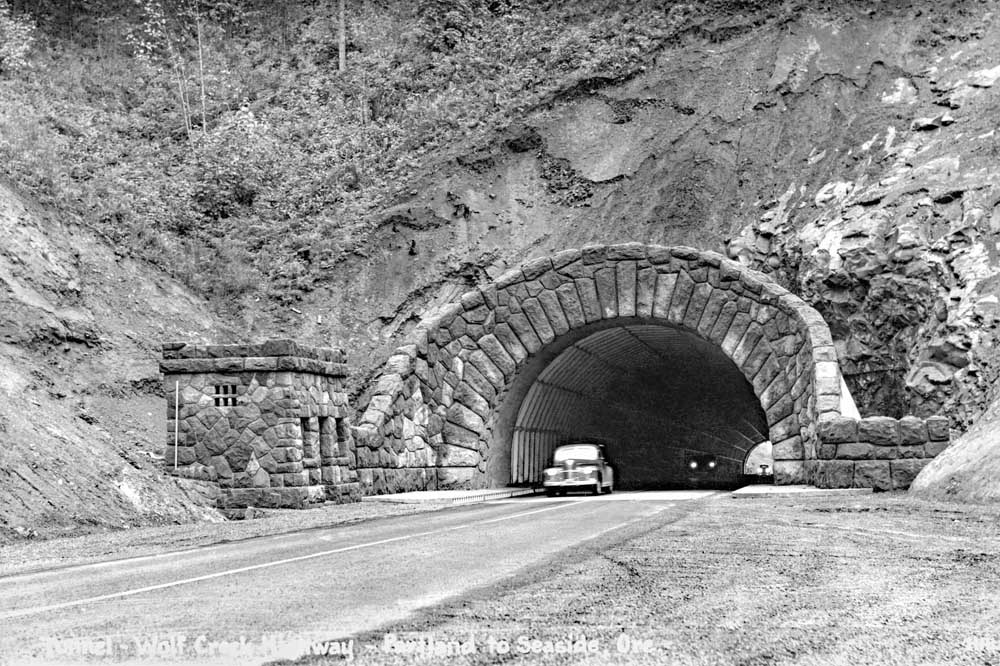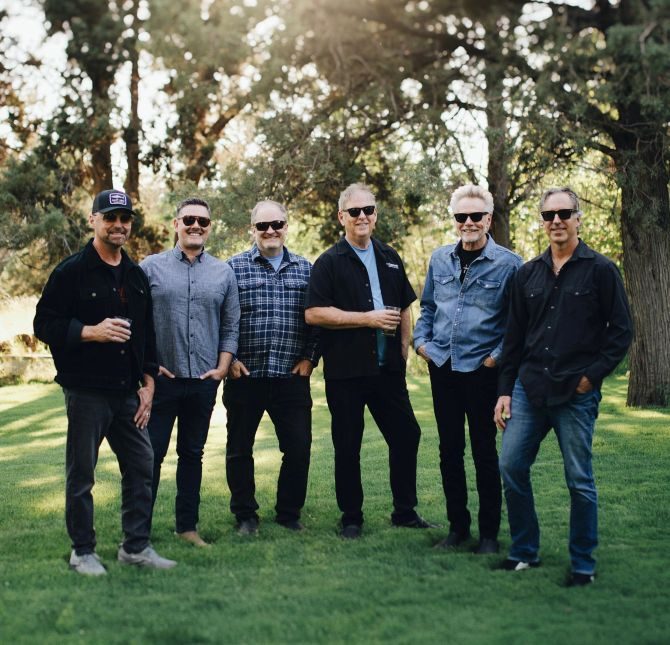Weekend Break: Exhibit details early resort travel in Seaside
Published 1:00 pm Monday, May 29, 2023

- A tunnel along the Wolf Creek Highway, later named U.S. Highway 26 and known as the Sunset Highway, linking Portland to Seaside.
Take a trip to Seaside from Astoria and you barely have to think about it, but once there was a time when it was quite an adventure.
Destination Seaside, the Seaside Museum & Historical Society’s newest exhibit, presents the variety of ways that people devised between the 1850s and 1950s to get to the beach.
“Formerly known as Clatsop Beach, Seaside was a destination early on in Oregon’s history,” said Teresa Taylor, curator of the exhibit. “I was familiar with the glamour days of hotels and the arrival of the trains, since my family had been coming to Seaside since 1913, but I had no idea people would voyage on oceangoing ships from San Francisco or take steamship excursions from Portland to get there.”
Lured to the Seaside House, Ben Holladay’s luxury hotel, wealthy adventurers flocked to the remote location in the 1870s and 1880s.
First known as Clatsop Beach, on the homeland of the Clatsop people before they were displaced by white settlers in 1851, the area was soon renamed Seaside after the Seaside House.
Travelers arrived by ship to Astoria and Youngs Bay and then transferred to carriages or luxurious stagecoaches, which took them along the beach until they reached Necanicum Estuary, a tidal marshland. The vast muddy bog could impede even seasoned travelers.
Nevertheless, Holladay’s luxurious property became a playground for the rich. Intrigued with its success, G.M. Grimes built the Grimes Hotel. Together, the enterprises established Seaside as an elite summer resort.
Corduroy roads consisting of logs, sand and dirt were built to negotiate the swampy estuary. In 1888, the Astoria & South Coast Railroad from Youngs Bay to Seaside arrived.
By 1898, the Astoria and Columbia River Railroad extended from Portland down the Columbia River, linking the coast leg. The popularity of Seaside as a vacation destination for not only the wealthy began to build in earnest.
One train arrival that excited many was the “daddy train,” which delivered men from Portland to Seaside on the weekends to join their vacationing families. In 1905, fares from Portland to Seaside were $4 per round trip.
In 1913, Oregon Gov. Oswald West, enamored with the coast, declared the ocean beaches from north to south forever open as public highways. To access these beaches, the unpaved Columbia River Highway between Astoria and Portland opened up in 1915.
Work began as well on the Wolf Creek Highway that eventually became U.S. Highway 26, the Sunset Highway. The primitive corduroy and stone macadam roads wouldn’t begin to be paved until the 1920s.
U.S. Highway 101 was built as the Roosevelt Coast Military Highway, named after President Theodore Roosevelt for military vehicle access in defense and emergency preparedness of the coast following World War I.
The pleasure-seeking public demanded that the roads continue to be improved, and the last of Oregon’s coast grading and paving project was finished some years later as the Oregon Coast Highway.
With enhanced highway systems, buses and automobiles soon made train travel obsolete. By 1950, the attraction of train travel was mostly over.
“We’re really happy how the exhibit turned out,” Taylor said. “The research was really fun. Oh my gosh, it was like Christmas. So many people were enthused about it and brought photos, postcards, written anecdotes and even maps with personal notations.”
One special photo was a picture of Sarah and Rose Swire on the Northern Pacific ship. Another of Taylor’s favorites is a map from the 1950s which someone had inked in their route from Portland to their destination — the Crab Broiler restaurant.
“The exhibit is filled with colorful stories, photos and details about how and even why people came to Seaside,” Taylor said. “I learned so much, even though my family has lived and traveled here for generations.”
Seaside Museum & Historical Society, 570 Necanicum Drive, Seaside
Open Wednesdays through Saturdays from 11 a.m. to 4 p.m.; on exhibit through November 2023
www.seasideoregonmuseum.com








